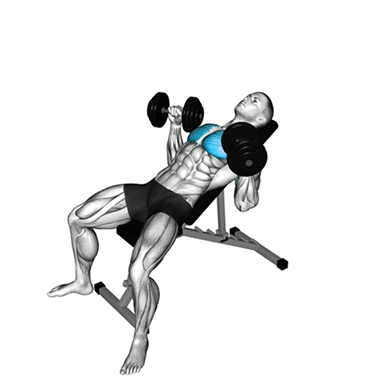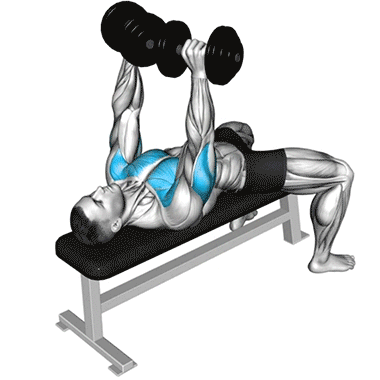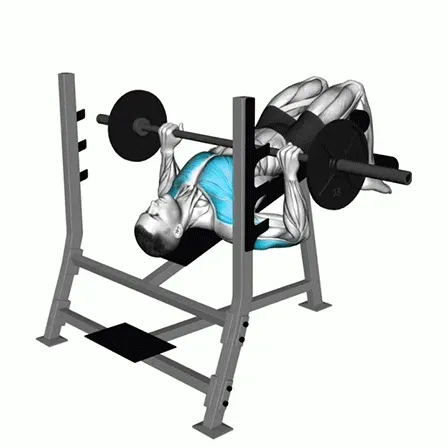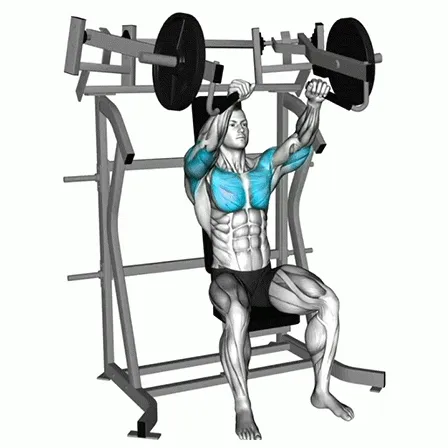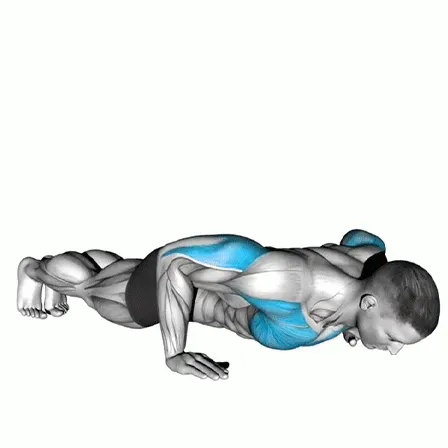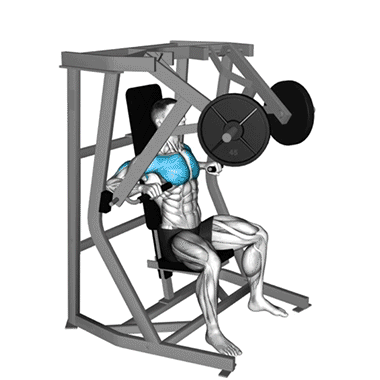Incline Bench Press: Target Your Upper Chest
The incline bench press is a staple exercise for building the upper portion of the pectoral muscles. By adjusting the bench to an incline, you emphasize the clavicular head of the chest while also engaging the shoulders and triceps. Proper technique is crucial to maximize results and prevent injury.
Instructions
Setup
-
Lie on an incline bench and set your hands just outside shoulder width.
-
Pinch your shoulder blades together and drive them into the bench for stability.
-
Take a deep breath and use a spotter for the lift-off to maintain tension through your upper back.
Execution
-
Starting Position
-
Let the weight settle while keeping your upper back tight.
-
Ensure the bar is aligned with your wrists and elbows.
-
-
Lowering Phase
-
Inhale and allow the bar to descend slowly by unlocking the elbows.
-
Lower the bar in a straight line to the base of the sternum (breastbone).
-
-
Pressing Phase
-
Push the bar back up in a straight line, driving your feet into the floor for leg drive.
-
Extend your elbows fully or stop just short of lockout to maintain tension through the chest and triceps.
-
Key Technique Tips
-
Keep the bar aligned with your wrists and elbows to avoid unnecessary strain.
-
Slight elbow tuck is acceptable; excessive tucking is unnecessary for most lifters.
-
Maintain tightness in your mid to upper back while keeping the lower back safe.
-
Always touch the bar to your chest for each rep, avoiding bouncing.
-
Grip: Start with the thumb wrapped around the bar; advanced lifters may experiment with a thumbless grip.
-
Adjust grip width according to arm length and shoulder comfort.
-
Squeeze the bar and maintain shoulder blade retraction throughout the lift.
-
Use controlled movements; avoid bouncing the bar or using momentum.
-
Focus on pushing yourself away from the bar rather than pushing the bar away from you.
-
Utilize leg drive by pressing your feet into the floor and engaging the glutes for pelvic stability.
Common Considerations
-
Experiment with slight variations in bench angle and grip width for optimal chest activation.
-
Keep the glutes and shoulder blades in contact with the bench at all times.
-
Pull the bar apart or “bend the bar” to activate stabilizers in the shoulders.
-
Prioritize maintaining tightness in the upper back throughout the lift.
Benefits of the Incline Bench Press
-
Emphasizes the upper chest (clavicular head) for balanced pectoral development.
-
Strengthens the anterior deltoids and triceps for improved pressing strength.
-
Enhances upper body aesthetics by building fuller, more defined shoulders and chest.
-
Improves benching performance in flat and incline variations.
-
Promotes better shoulder stability and control through proper scapular positioning.
-
Supports safe lifting mechanics, reducing risk of injury with correct form.
Conclusion: The incline bench press is a critical exercise for anyone aiming to build a well-rounded, strong upper chest. Focusing on proper form, controlled movement, and full engagement of the upper back, shoulders, and triceps will maximize muscle activation and ensure safe lifting.
